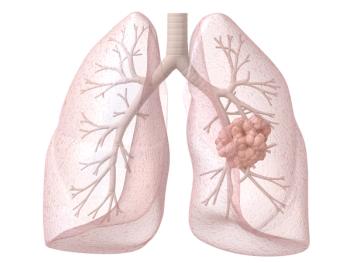
Oncology NEWS International
- Oncology NEWS International Vol 17 No 5
- Volume 17
- Issue 5
In colorectal liver mets, pCR heralds long-term survival
ORLANDO-In a subset of patients with colorectal liver metastases, a pathologic complete response can be achieved with preoperative chemotherapy, rendering “uncommonly high” disease-free and overall survival rates, French investigators reported at the 2008 Gastrointestinal Cancers Symposium (abstract 333).
ORLANDO-In a subset of patients with colorectal liver metastases, a pathologic complete response can be achieved with preoperative chemotherapy, rendering “uncommonly high” disease-free and overall survival rates, French investigators reported at the 2008 Gastrointestinal Cancers Symposium (abstract 333).
Rene Adam, MD, PhD, of the Hospital Paul Brousse, Villejuif, France, and colleagues presented their series of 767 consecutive patients from 1985 to 2006. Patients underwent liver resection after systemic chemotherapy, and those achieving a pCR were compared with those without this level of response.
The definition of a pCR was the total necrosis or disappearance of all viable tumor cells on the resection specimen. A complete clinical response was defined as the total radiologic disappearance of all lesions after chemotherapy.
Of the 767 patients, 29 (4%) achieved a pCR prior to hepatectomy, while 2 (0.35%) had a complete clinical response. Both patients with a complete clinical response did not have a pCR. “One of our key findings is that pCR is 10 times more likely to be observed than a complete clinical response,” Dr. Adam noted.
Compared with patients not achieving a pCR, patients with pCR were younger, had a smaller maximum tumor size, and were more likely to achieve a radiologic response. FOLFOX was associated with three times more pCRs than FOLFIRI, which Dr. Adam believes may be clinically relevant.
At median follow-up of 52 months, the overall 5- and 10-year survival of patients with a pCR was 76% and 69%, respectively, compared with 45% and 29% for those without a pCR (P = .004). Disease-free survival rates at 5 years were 69% for the pCR group and 19% for those without a pCR (P < .001).
“The survival rates were amazing,” Dr. Adam noted. “Ten-year survival is almost 70%, which means that patients with this type of response are almost cured by the combination of chemotherapy and surgery.”
This raises the question of the usefulness of doing a resection, he said, “because these patients have tumors that are completely necrosed and thus surgery might be unnecessary.” But resection is the only way to make the diagnosis of necrosis. “Neither CT nor PET imaging is good for confirming complete necrosis. A negative imaging test does not mean the same thing as total necrosis. It is important to resect all of the tumor,” he said.
In a multivariate analysis, four predictive factors for pCR were identified: Age ≤ 60 years, lesion size ≤ 3 cm, CEA ≤ 30 ng/mL, and objective radiologic response.The probability of a pCR ranged from 0.2% when all factors were absent to 30.9% when all were present.
Articles in this issue
over 17 years ago
Immunotherapy agent promising in NSCLCover 17 years ago
NCCN greenlights nilotinib for imatinib-resistant CML patientsover 17 years ago
No overall survival benefit for dose-intense regimen in SCLCover 17 years ago
Make a note of new smoking cessation codesover 17 years ago
Relistor for treating OICover 17 years ago
Experts argue against need for phase III proton Rx trialsover 17 years ago
Spotlight on Cancer Centersover 17 years ago
Novel peptide vaccine promising in myeloid leukemiaover 17 years ago
Intensive imatinib/chemo ups EFS in pediatric Ph+ ALLNewsletter
Stay up to date on recent advances in the multidisciplinary approach to cancer.



















































































